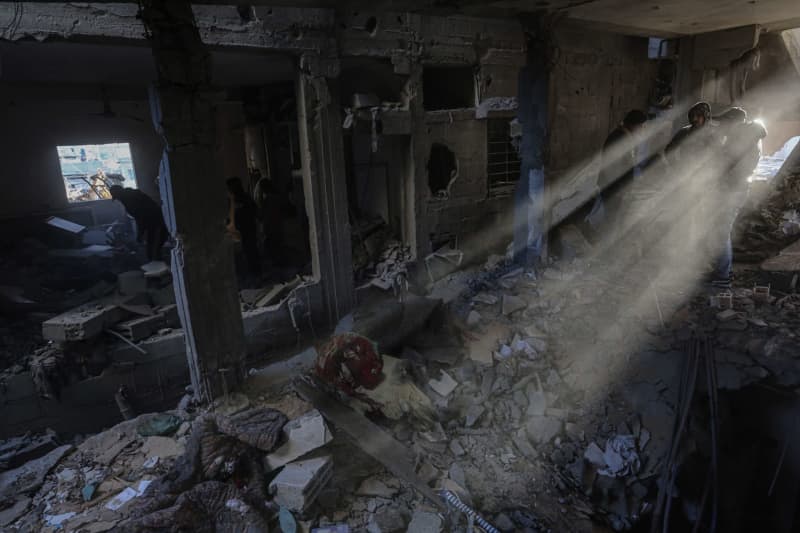On a recent Sunday evening, an Israeli airstrike targeted a former school building in the southern Gaza Strip, resulting in the tragic loss of around 20 lives, according to Palestinian sources. Among the casualties were children, highlighting the devastating impact of the ongoing conflict on its most vulnerable inhabitants. The Palestinian news agency WAFA reported the event, emphasizing the human cost of military operations in densely populated areas. In a starkly different narrative, the Israeli army justified the airstrike by asserting that it was aimed at a “command and control center of Hamas terrorists,” allegedly utilizing the school site for operational purposes. This contrast in perspectives underscores the complexities of wartime narratives, where claims from conflicting parties remain unverified by independent sources.
The current escalation in violence can be traced back to an egregious incident on October 7, 2023, when Palestinian terrorists executed a large-scale attack in Israel, leading to over 1,200 deaths and around 250 abductions. This tragic event marked a significant turning point in the regional conflict, intensifying hostilities between Israel and the Hamas organization, which governs the Gaza Strip. The attack aroused a fierce retaliation from Israel, resulting in sustained military operations against Hamas, aimed at dismantling its infrastructure and capabilities within Gaza. The cycle of violence has entrenched the divide between the two factions, deepening animosities and escalating the toll on both sides.
Reports from Palestinian sources indicate that the human cost of the ongoing conflict is staggering, with estimates suggesting that around 45,000 individuals have lost their lives since the beginning of Israel’s military actions in Gaza. This alarming statistic raises critical concerns about the distinction between combatants and civilians in conflict zones, as many reports do not differentiate between the two. The tragic outcomes of airstrikes and military engagements often lead to a heavy civilian toll, exacerbating the humanitarian crisis in the region and drawing widespread international condemnation and concern over the human rights implications.
As the conflict continues, the humanitarian situation in Gaza has become increasingly desperate. The blockade imposed by Israel, combined with the ongoing military actions, has severely limited access to essential resources such as food, water, and medical supplies. The international community has expressed alarm over the deteriorating living conditions for civilians caught in the crossfire, calling for urgent humanitarian assistance and a ceasefire to alleviate the suffering of those affected. Various organizations and governments have attempted to mediate between the warring factions, seeking a resolution to the violence that has plagued the region for decades, albeit with limited success.
In this context, the narratives propagated by both sides reflect broader geopolitical dynamics that influence the Israel-Palestine conflict. Israel maintains that its military operations are essential for national security and self-defense against terrorist threats, while Hamas positions itself as a resistance movement fighting against occupation and oppression. This dichotomy complicates the efforts toward peace, as mutual distrust and entrenched positions hinder dialogue and compromise. Furthermore, the escalating casualties on both sides may lead to a hardening of public opinion, making reconciliation increasingly challenging in the face of nationalistic sentiments and past grievances.
As the situation develops, it becomes increasingly crucial for the international community to engage meaningfully in efforts to mediate a ceasefire and facilitate dialogue. The ongoing violence represents not only a humanitarian crisis but also a moral imperative for global leaders to advocate for the protection of civilians and the pursuit of peaceful solutions. Amid the turmoil, the hope remains that a sustainable resolution can be achieved, addressing the underlying issues that have fueled the conflict for generations. The human suffering displayed in these recent events serves as a stark reminder of the urgent need for effective action towards peace and stability in the region.

